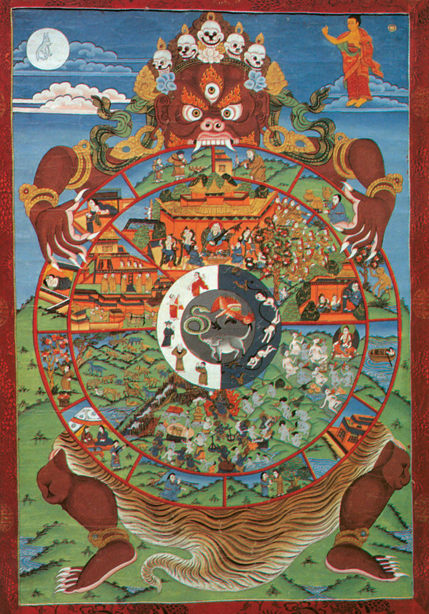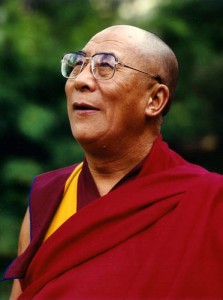The Buddhist philosophy of “becoming again” holds that when we die, our souls begin life in a new form. Whatever the new vessel for our spirit will be — human or otherwise – all depends on our former life’s actions, or karma. This belief in the cyclical nature of life after death is a long-standing Buddhist tradition, with a history that dates as far back as the Iron Age. Essentially, the Buddhist belief in becoming again upholds the view that the life we live is important, but not inextricably bound to the body it is in. Instead, Buddhist tradition holds that we are part of an ongoing, eternal stream of life after death.
The ancient Chinese philosopher Zhuangzi, though primarily known for his contributions to Daoism, once stated that “Birth is not a beginning; death is not an end. There is existence without limitation; there is continuity without a starting-point. Existence without limitation is Space. Continuity without a starting point is Time. There is birth, there is death, there is issuing forth, there is entering in.”
Even the style in which Zhuangzi writes reflects the cyclical nature of life after death in Buddhism. For the philosophy of becoming again, death is more of a regenerative tool than an end-all event. The result is that we find ourselves in a never-ending stream of consciousness. “At the death of one personality,” states Buddhist belief, “a new one comes into being, much as the flame of a dying candle can serve to light the flame of another.”
“At the death of one personality,” states Buddhist belief, “a new one comes into being, much as the flame of a dying candle can serve to light the flame of another.”
“There are many different logical arguments to prove the existence of past and future lives,” says the Dalai Lama, “Ultimately all these arguments are based on the idea that the nature of the mind, its clarity and awareness, must have clarity and awareness as its substantial cause. As far as I know, no modern psychologist, physicist, or neuroscientist has been able to observe or predict the production of mind either from matter or without cause.”
“There are many different logical arguments to prove the existence of past and future lives,” says the Dalai Lama
The connections we can make between our past, current and future lives are rooted in the 12 links of dependent origination, or pratityasamutpada in Sanskrit. “The word pratitya has three different meanings — meeting, relying, and depending,” explains the Dalai Lama, “but all three, in terms of their basic importance, mean dependence. Samutpada means arising. Hence, the meaning of pratityasamutpada.”
Feeling, Craving, Clinging, Becoming — these are just some of the spokes that are linked to each other on a wheel of dependent origination. And the quality of our lives between cycles depends on how much we do, or don’t, pass through these various links before our next becoming again.
Related SevenPonds Articles:
- Buddhism and the Eastern Middle Ground
- Funeral Rites in the Buddhist Tradition
- Bizarre Death Ritual: 19th Century Buddhist Self-Mummification

 The Buddhist Philosophy of Becoming Again
The Buddhist Philosophy of Becoming Again




 John Mulaney’s “Funeral Planning” on Netflix: No Real Plan
John Mulaney’s “Funeral Planning” on Netflix: No Real Plan

 Composting Bodies Is Now Legal in a Dozen States
Composting Bodies Is Now Legal in a Dozen States














